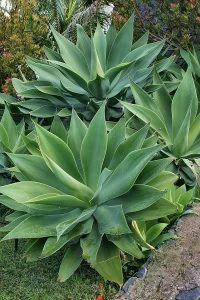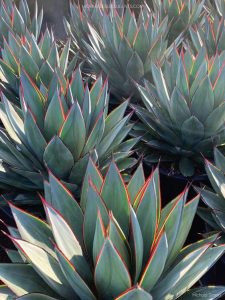Gardeners love Agaves because of their distinctive look and adaptability; they are also a common succulent. These plants not only have special visual appeal but also fit rather well in a range of settings, whether for interior décor or outdoor ones. Explore all facets of Agave Succulents, including a basic introduction, care needs, many kinds, propagation techniques, and frequently asked questions to help you completely appreciate the appeal of this special plant.

agave plant supplier
Agave Succient Profile
Large, stunning leaves—often sharp-edged and rich in texture—are what agaves are most famous for. Though slow-growing plants, agaves may reach amazing heights when mature; some types can grow up to 20 feet tall.
Growing in the ground and containers, agaves are very flexible and fit for many conditions. These extremely adaptive undemanding of soil plants may endure bad circumstances and drought. Planting agaves in spring or early autumn helps them flourish most. Agaves have a lengthy blooming cycle, hence some types will generate berry seed pods after the bloom and then die.
Usually featuring delicate tones and yellow, green or white, bell-shaped blooms, agave succulents may brighten any home setting. Their drought resistance helps them to thrive in frigid regions like Canada and the Pacific Northwest.
Agave Care
Lighting needs
Agave plants are happiest when they get a few hours of direct sunlight every day; they enjoy sunshine. While they may thrive in semi-shaded environments, ideal placement for them inside to provide enough light is next to a window facing west or south.
Managing Water
Agaves need less water as they are endemic in dry regions. Their best growth seasons are spring and autumn; so, water should be given consistently throughout this period. Still, water frequency should be reduced to once a month in winter. Agaves planted in containers need more water than those grown in the ground; hence, change the watering quantity according on the real circumstances.
Soil Requirements
Agaves do well in either a rich, fast-draining soil mix or normal potting soil. Excess water is eliminated from well-drained soil, therefore lowering the possibility of root rot and other soil-borne illnesses.
Fertilizer and Humidity
Agaves flourish springtime when nourished. Usually needing fertilizing for their first two years, succulents may thrive on their own once they reach maturity. Agaves are low humidity suited plants, hence humidity problems are not a concern.
Tolerance for Temperature
Agaves optimal temperature range is 65 to 80°F; they are hardy in cold zones 7 to 10. These plants should be maintained away from cooler regions to avoid frost damage as they prefer warmer surroundings.
Various Agave Plant Varieties
With more than 200 species, each with special qualities and visual appeal, the Agave family The following are many typical Agave cultivars along with their features:
Agave Kuavandivi
Originally from Oaxaca, Mexico, this little rosette-shaped succulent is prized for its light blue leaves and pleasing looks.
Victoria-Reginae agave
Known sometimes as Queen Victoria Agave or the Royal Agave, this cultivar does not bloom for around twenty to thirty years. Small and with black tip leaves, they have a distinctive look.
Agave Tequilana
Often referred to as the blue agave, it features blue-green foliage and yellow blossoms and grows up to seven feet tall. Its application in creating tequila is well-known.
Agave Filifera Schidiger
This plant grows white-green blossoms for 10 years and has white thread-like filaments on its leaves.
AGave Stricta
Often referred to as the Hedgehog Agave, its dark green leaves and crimson blossoms give it porcupine-like appearance, therefore enhancing its beauty value.
American Azu Agave
Native to Mexico, this blooming plant—known as the plant of the century—has gray-green leaves that attract hummingbirds when it blossoms.
Agave Isthmensensis Rum Runner
With pink-orange blossoms in spring and golden-yellow stripes on its leaves, this rosette-shaped succulent may have a 25-centimeter circumference.
Truncato Agave
Often planted outdoors, this resilient plant—also known as Mezcal Agave or Artichoke Agave—forms a rosette of wide leaves.
Agave blu
These slow-growing succulents fit interior décor because of their individual blue-green leaf rosettes and height of two feet.
Agave Bractedeosa
Native to Mexico, this evergreen succulent—often called Squid Agave or Spider Agave—grows from 2 to 3 feet tall.
La agave leopoldi
Perfect for indoor gardening, this little slow-growing cultivar has slender, light green leaves.
Agave toumeyana Bella
Usually flowering in the spring and summer, a little, resilient rosette plant known as Miniature Agave, Toumey Agave, and Silver Dollar Agave.
Agave propagation techniques:
There are ways to grow agave plants:
Propagation using cuttings
Using a clean, sharp knife, remove the seedling or young plant from the mother Agave plant. Cut directly between the plant and the seedling, around where the lowest leaves start. Let the cut callous for a little. Plant the seedling in fast-draining soil then; after about two weeks, the root system will start to develop.
Seed propagation
Scoop a well-draining soil mixture into a container and plant seeds 0.5 to 1 cm apart. To maintain wet, add a layer of perlite, sand, or fine gravel and water very gently. Usually occurring between one and two weeks, germination calls for placing the container in sunlight but prevent too much exposure.
Cloning for propagation
Often utilized by experienced gardeners, this technique—also called as micropropagation or tissue culture—is This method allows one to efficiently grow agave plants, particularly in cases of limited cuttings or seeds availability.
Lighting propagation
This approach is easier because bulb planting generates fresh plants. After the agave blossoms, the bulb develops on the stem and will produce little roots upon planting. To prevent root rot, be sure you carefully regulate the watering level.
Questions of Frequency
Agave either a cactus or a succulent?
Though agaves are really succulents, they are often mistaken with cacti. The primary distinction is that agaves include big leaves with thorns at the tips, whereas cactus lack leaves. Though not every succulent is a cactus, all cacti are succulents.
In zone 6 is agave possible?
Most agaves are not suited for frost. Exceptional exception is the Parry Agave, however. Blooms yellow in summer; it is hardy in cold zones 6 through 10. Soap, fiber, and medication are among the products made from it most often.
Variagenated agave is what?
Because certain parts of the leaves lack chlorophyll, variegated agaves produce white or yellow stripes. Common variegated agaves include Agave desmettiana variegata, Agave kissho kan variegated, Agave victoria reginae variegated, and Agave americana variegated. Prefering full sun, well-drained soil, and occasional watering, they are quite easy to care for and maintain.

Agave
Both novice gardeners and experienced ones will find agave succulents simple to cultivate. Easy to maintain, drought-tolerant, and in a range of colors that accentuate indoor and outdoor environments, they are also Whether used for a garden or home décor project, agaves provide a fresh, natural accent. Choose an Agave plant and enjoy working with this tough plant!
Post time: 09-18-2024




